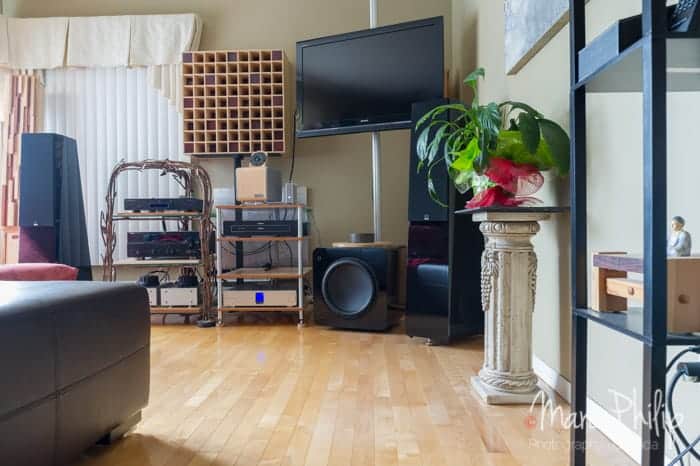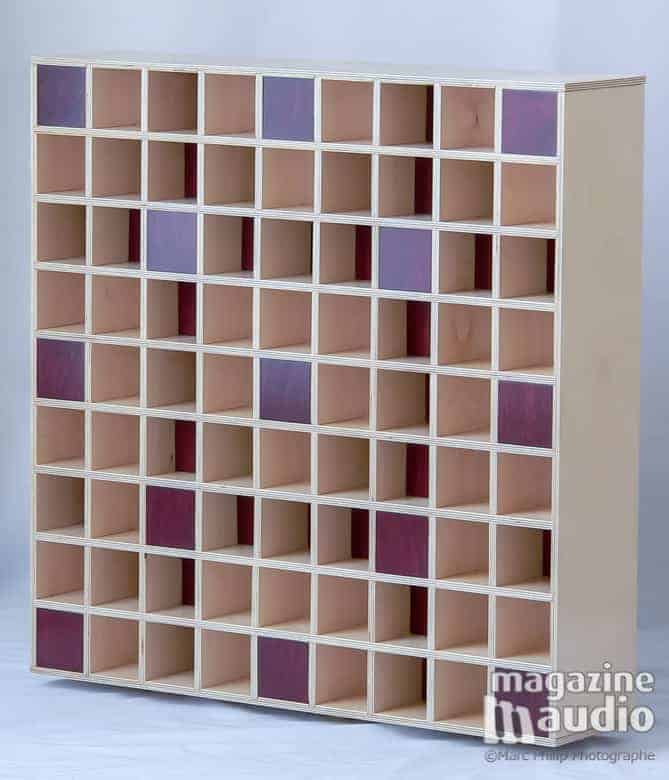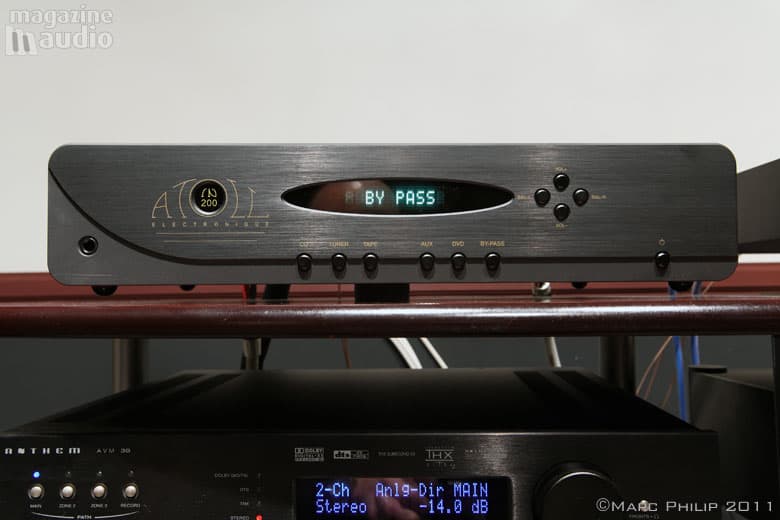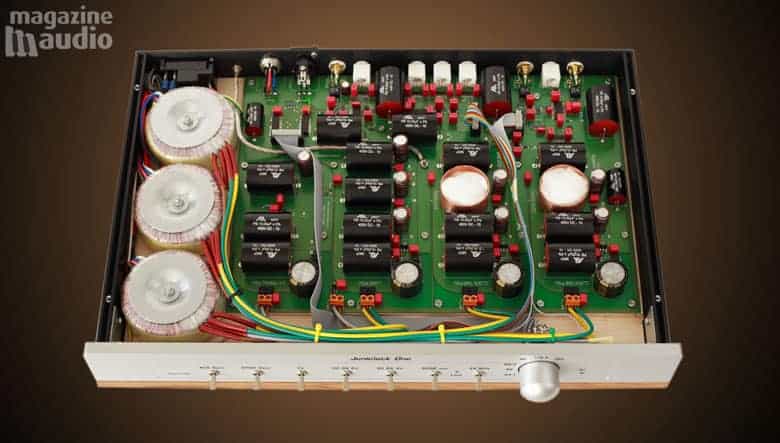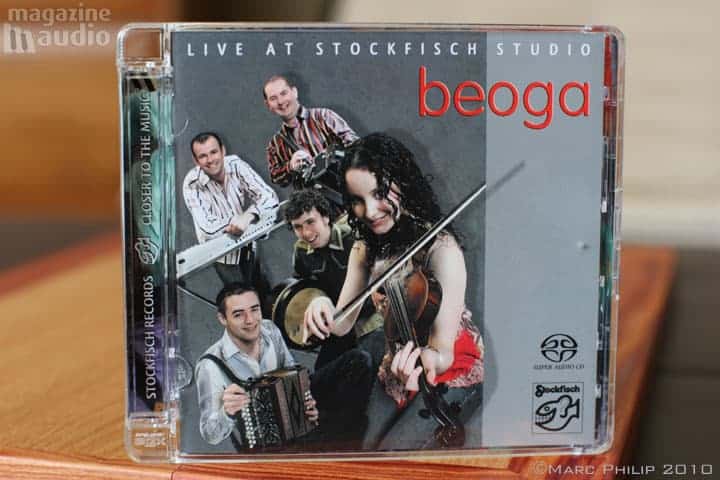Nous connaissons la marque Allemande MBL pour ses belles électroniques et ses haut-parleurs dont la particularité est de rayonner à 360°.
Ce que j’ignorais et la plupart d’entre vous aussi, c’est que par l’entremise de Mr Jürgen Reis, recording/mastering engineer, MBL s’intéresse aussi à la musique et aux musiciens.
Je vous présente Martin Vatter, pianiste et compositeur d’origine Allemande.
Il joue du piano depuis l’âge de 9 ans, ses parents sont aussi des musiciens, sa mère est organiste et son père joue du violon et de la trompette.
Son jeu est très agréable, fluide et chantant. Juergen a préservé beaucoup de réverbération sur ces enregistrements.
Pour une raison que j’ignore, j’ai plus apprécié l’écoute au casque, que celle que j’ai fait sur un système hifi conventionnel.
Il m’a semblé que la proximité valait mieux que tout autre mode de reproduction dans la circonstance. Même chez Stéphane et ses belles Proac D38 associées à l’ampli Stormaudio.
En revanche au casque, c’est génial.
Très jeune Martin s’est donc consacré à jouer les pièces classiques des autres, mais il a aussi mis du temps et de l’énergie pour ses propres compositions.
En 1986 il entend jouer Keith Jarrett « The Köln Concert » et ce fut une révélation. C’est la première fois me confie t il qu’il a entendu chanter un grand piano, la vraie sonorité du grand piano.
C’est à partir de là que sa carrière a véritablement démarré.
Alors une chose à savoir sur Martin Vatter, il aime jouer avec et sur son piano, vous comprendrez mieux lorsque vous irez écouter quelques extraits ou irez lire sur son Facebook.
Calme, relax, sa musique invite à la rêverie à l’imaginaire. C’est assez inspirant, puisque je suis en train d’écouter son premier opus au moment où je rédige ces lignes.
J’aurais très bien vu cette musique accompagner les images d’un film.
Martin possède le doigté d’un Michel Legrand, tant les notes se détachent avec facilités, on a parfois le sentiment qu’il est accompagné d’une harpe.
Je me suis longuement entretenu avec Martin et voici ce qu’il avait à nous dire:
Martin, que signifie le mot Klangbilder?
KLANGBILDER means « SOUND IMAGES »
Pianomusic associated with famous paintings by Franz Marc (on KLANGBILDER 2) and Lovis Corinth (on KLANGBILDER 1).
I « translated » my inspiration into music…
Belle inspiration, je comprends mieux les circonstances qui ont conduit Martin à composer de la sorte.
Sachez également que Martin pour jouer « KLANGBILDER 1 » a utilisé un Steinway & Sons Modèle Grand Concert type D (274 cm de long) fabriqué en 1929.
Sur « KLANGBILDER 2 » il joue sur un Steinway & Sons Modèle Grand Concert type D (274 cm de long) fabriqué en 2008.
Le Grand Concert type D Steinway & Sons avec le Yamaha C7 sont mes pianos préférés, de part leur sonorité riche et crystalline. Peut être serez vous en mesure de distinguer le son des deux pianos Steinway sur ces enregistrements.
Martin, quels sont tes rapports avec MBL?
Last year I presented my two « KLANGBILDER-CDs » at MBL at the « High End Exhibition 2012 » in Munich and gave some workshops.
This year I am also invited from MBL to present my audiophile recordings at MBL at the upcomming « High End Exhibition 2013 » in Munich (From 9. to 12th of may).
Raconte nous ta rencontre avec Jürgen et les liens que tu as avec MBL.
Hi Marc,
in 2007 I meet Jürgen the first time at the « High End Exhibition 2006 » in Munich. I presented him my CDs…
Especially from my Debut-CD « ASK THE PIANO » (recorded by Carlos Albrecht in the famous Bauer Studios here in Germany with the legendary « Neumann SM 69 » Tube Microphone) Jürgen was very impressed.
After some time he told me that he is also doing audiophile recordings with his own equipment.
His philosophy: The less recording-equipment, the better! Every used unit changes the record-signal.
Recording « KLANGBILDER 1 » (SOUND IMAGES 1)
In 2008 I called him an told him about my planned production of my audiophile CD « KLANGBILDER 1 » (SOUND IMAGES 1 – Extraordinary Piano Music associated with famous paintings by Lovis Corinth). And we started the recording-work in May 2009 in the famous Bauer Studio in Ludwigsburg/Germany. The huge recording-room fits perfect to the wonderful sound-color of the brilliant Steinway & Sons Mod D (274 cm length) built in 1929.
But, we didn’t use any recording-equipment from the Bauer Studio!
Jurgen brought all of his personal equipment from Berlin to the Studio! So we recorded in the purest possible way!. Jurgen used modified microphones (by himself) and only his Laptop. He recorded in High Res quality directly on the hard disc…
Recording « KLANGBILDER 2 » (SOUND IMAGES 2)
In October 2011 we did the same procedure (s. text above) for the recording of « SOUND IMAGES 2 ».
But, due to the fact that the Steinway-Grand Piano at Bauer Studio was definitely much more badder than the first recording, I looked for a better instrument and found it in Stuttgart / Germany.
The Steinway & Sons Mod. D (also 274 cm) there was built in 2008 and had a very warm and « friendly » Tone. Not so much « percussive » and characteristic like the Grand in the Bauer Studios but also very lovely and perfect.
In contrast to the Bauer Studio (which the room was concepted as a pure recording-room), this room in Stuttgart was a concert hall with carpets and many soft chairs. The acoustic was more « dry » and therefore Jürgen placed the microphones closer to the piano strings than at the recording at Bauer Studio. So Jürgen banned all details of my music on the recording.
En quoi a consisté le setup des prises de sons.
Differences referring recording-quality « KLANGBILDER 1 » and « KLANGBILDER 2 »:
— « KLANGBILDER 1 »:
Big recording hall which fits perfect to the used Grand Piano. Due to the clear acoustic, Jürgen placed the microphones in a little bit bigger distance to the piano strings without missing details. Further on you hear more « room details » on « KLANGBILDER 1 » than on « KLANGBILDER 2 ».
— « KLANGBILDER 2 »:
Due to the fact, that this was a real concert-hall, the acoustic was more « dry » than at Bauer Studio (carpets and lot of soft chairs). That’s why Jürgen had to place the micros closer to the piano strings. So you hear not so much « room-acoustic » like at « KLANGBILDER 12. The Pianosound was also a little bit milder an softer here.
Es tu en mesure de nous expliquer les différences sonores entres les deux pianos?
yes, of course. I can hear the differences between the two used Grand Pianos!
Grand Piano at Bauer Studio: Very characteristic and clear tone. Tends to more (in combination with the huge recording room) percussive sound. (At instruments it is like at wine: It takes a lot of time to develop characteristic taste. The grand piano at Bauer studio had time since 1929 to develop his wonderful sound color.
Grand Piano at KLANGBILDER 2: The Grand Piano is much more younger (2008). Therefore the sound must be different to such of an old instrument. This grand sounded more « polite », warm and soft and not so percussive…
En tous cas, les deux enregistrements « KLANGBILDER 1 » et « KLANGBILDER 2 » ont été réalisé sans la moindre limitation ou compression. Ils sont parvenus à obtenir une plage dynamique de 13 dB (DR 13) sachant qu’habituellement on se situe à environ 5 db et les prises de sons ont toutes été faites en direct sans coupure en une seule prise.
Crois tu que l’on puisse reproduire le son d’origine avec un système hifi?
To a certain extent, yes. But not to 100 percent! The original will be ever the original!
But Jürgen and I tried extremely hard to reach the maximum what is reachable!
I never heard such an deep emotionally recording before!
Jurgens philosophy: The most important thing is Emotion. If I hear music I must feel emotions!
My Philosophy: The most important thing is the essential MESSAGE in my music. This « message » I have to bring as direct as possible into my listener hearts.
Pour en apprendre d’avantage sur qui il est, Martin Vatter a gentiment accepté de nous raconter plus en détail les aspects de sa vie, plus particulièrement ceux qui concernent la musique… évidemment.
In 1994 I recorded my fist CD « ASK THE PIANO » in the famous Bauer Studios here in Germany with the renowned Sound engineer Carlos Albrecht (which is quite admired especially in the audiophile scene). The warm and « tuby » recording (achieved with the legendary Neumann Microphone SM 69″ is absolutely « state of the art » even to know.
1999 I recorded my second CD « BE YOU ».
2004 followed the Maxi-CD « TRY A NEW WAY » (Awarded to « Audiophile CD Of The Month » in Germany AUDIO-Magazine)
2006: Maxi-CD « NIGHT IMPRESSIONS » Awarded to « Audiophile Pop-CD Of The Month » in Germany AUDIO-Magazine)
The special here: The sound was only created by muting and plucking of individual piano strings. I damped some strings with my fingers and played the same key. So you get a dry an funky base-sound.
Then I recorded a new track « over » this track and so on. I you listen to the audio-samples an my website you get the impression that a lot of different instruments are playing.
But: All sounds are produced only by the grand piano and by my hand.
It’s crazy and interesting for a lot of your readers, surely! Listen to the audio-samples of « NIGHT IMPRESSIONS ». (Even people which don’t like solo piano very much will like this CD! (the first Track of « TRY A NEW WAY » is also recorded in this way…).
– 2009: Maxi-CD « KLANGBILDER 1 » (Awarded to « Audiophile Highlight Of The Month » in Germany STEREO-Magazine)
– 2012: Maxi-CD « KLANGBILDER 2 » (Awarded to « Audiophile CD Of The Month » in Germany AUDIO-Magazine and to « Audiophile Highlight Of The Month » in Germany STEREO-Magazine)
Parlon musique
« KLANGBILDER 1 » and « KLANGBILDER 2 » sont disponibles en téléchargement en HD 24/88kHz, vous pouvez écouter en ligne directement en vous rendant sur les pages ci-dessous:
- KLANGBILDER 1: http://www.highresaudio.com/artist.php?abid=6682
- KLANGBILDER 2: http://www.highresaudio.com/artist.php?abid=47889
Martin, que signifie le mot « audiophile » pour toi?
Audiophile is for me:
Not a thing to replace a real live-concert. Handmade live-music is absolutely the best for transform emotions and feelings.
But, if a musician transmit emotions and a « message » in his composition, you will feel it as well on a recording.
Rien qui ne puisse remplacer le son « live ». Jouer soit même de la musique est le meilleur moyen d’obtenir émotions et sensations. Mais si un musicien arrive à transmettre cette émotion dans ses compositions, au travers de l’enregistrement cela devrait s’entendre.
The problem is: Many people are not used to visit live concert.
Le problème c’est que la plupart des gens ne vont pas au concert.
So they will never hear the advantages of a real good hifi-system because the don’t know how a real instrument sounds.
Dans ces conditions, ils ne pourront jamais savoir ce que vale leur système hifi si déjà ils ne savent pas comment sonne un instrument réel.
And: A active musician hear more « how is it played » than « how is the sound ». That’s why a lot of musicians have bad hifi systems at home 🙂 . (It’s my experience).
Un musicien sera plus en mesure de savoir comment c’est joué, plus que comment est le son. C’est la raison pour laquelle beaucoup de musiciens possèdent des système hifi médiocre chez eux 🙂 (expérience vécue)
To come back to your question finally:
Pour revenir à ta question initiale:
Audiophile means for me as a musician: Trying first to transmit my very personal « message » and emotionality in my composition and my playing.
Le mot audiophile signifie pour moi qui suis musicien, d’essayer de transmettre mon message personnel, le plus intime qui se trouvent dans mes compositions quand je joue.
Second: This song has to be recorded from a skilled sound engineer (like Jürgen), who is able to do a recording which saves all the emotionality from the musicians side. If this recording will be replayed on a good audiophile hifi-set (which is concepted and developed by a real musician / like Jürgen at MBL) that’s the real « audiophile ».
Deuxièmement, si la musique a été enregistrée par un gars compétent et expérimenté, tel Jürgen, qui est capable de capturer toute l’émotion dans le jeu du musicien. Alors ce même morceau s’il est lu depuis un bon système hifi sans perte, c’est ce que j’appelle un enregistrement audiophile.
Conclusion
J’aime la relation entre vin et musique, la notion de sensation et musique est une notion de base pour Martin également.
Il est intéressant de voir que le mot audiophile, revêt des significations différentes, mais à la finale, comme le dit si justement Martin, un enregistrement audiophile sera celui qui aura conservé toute l’émotion du jeu du musicien, avec tous les micros détails et inflections.
Ce en quoi je souscris sans réserve. Certains enregistrements possèdent cette qualité. Si le système hifi est en mesure de reproduire fidèlement cette émotion, alors c’est qu’il peut véritablement s’appeler haute fidélité.
Sachez en parenthèse que monsieur Juergen Reis, qui est preneur de son pour Martin Vatter, travaille pour MBL depuis 30 ans. Il est ingénieur en chef et directeur au département recherche et développement depuis maintenant 28 ans et responsable de la partie son des produits, CD, DAC, Preamp, Amplis et haut-parleurs.
Martin connait son piano par cœur, quand au début de l’article je faisais référence à son jeu avec et sur son instrument, j’aurais dû rajouter, dedans.
Il aime mettre ses doigts sur les cordes du cadre intérieur et sur le clavier, ceci afin de reproduire des sons différents, j’ai beaucoup apprécié cette particularité que je n’avais véritablement entendue qu’avec Jacky Terrasson.
J’aurais aimé entendre plus de pièces musicales, 3 + 4 c’est un peu court, surtout quand c’est aussi bon 🙂
C’est dans des moments pareils que le casque Sennheiser HD800 me manque.
Contact et information
Martin Vatter: compositeur et pianiste
La pensée du moment.
Ce que nos grands parents nous ont dit est la pure vérité. Tu recevras toujours ce que tu souhaites aux autres.
Être heureux n’est pas une affaire de destin, c’est une affaire d’options ou de choix. Quand tu prends les idées de tes confrères en les faisant tiennes, que tu écris sous différents pseudos pour te cacher, que tu harcèles les gens sur les forums et par téléphone, que tu formules des propos diffamatoires qui portent atteinte à ma réputation, il faut que tu t’attendes un jour à te faire attraper et en subir les conséquences.
Cet article a été rédigé par Marc PHILIP, rédacteur indépendant, tous droits réservés, copyright 2013, les textes et photos sont la propriété de l’auteur et du magazine.
Bon divertissement.



